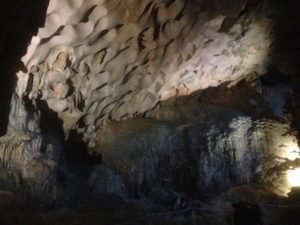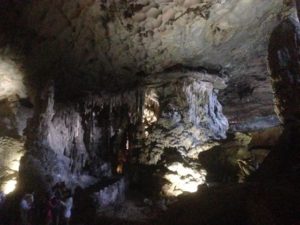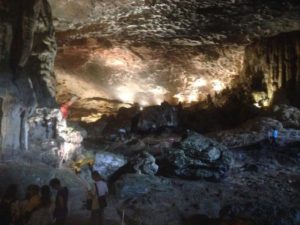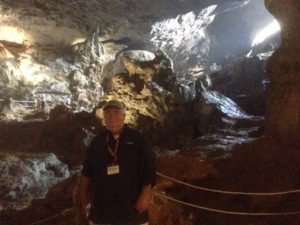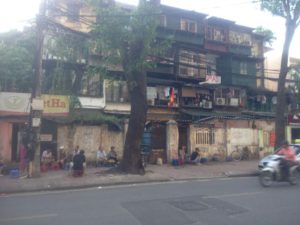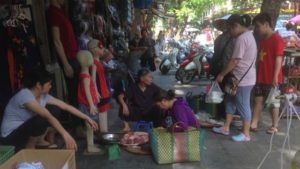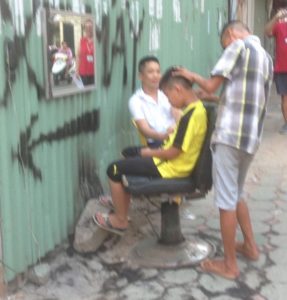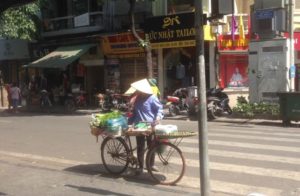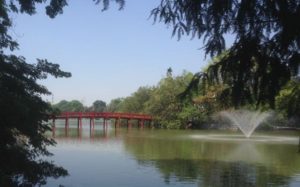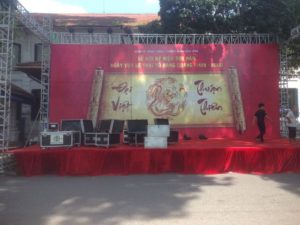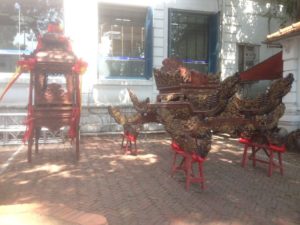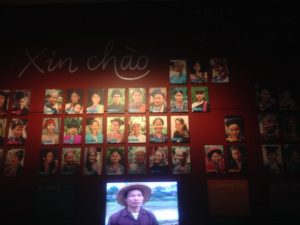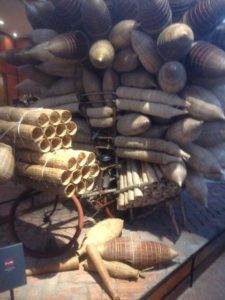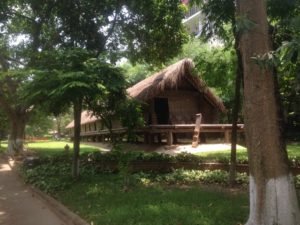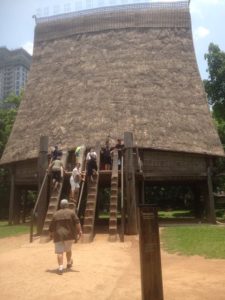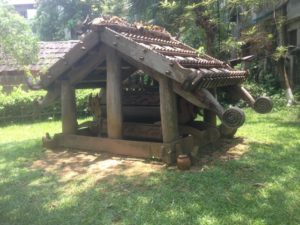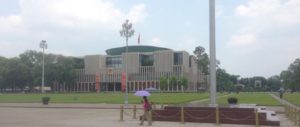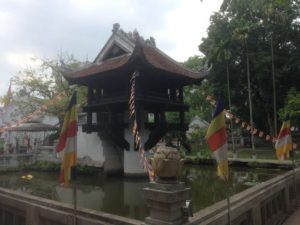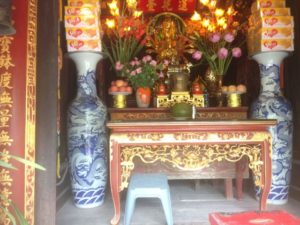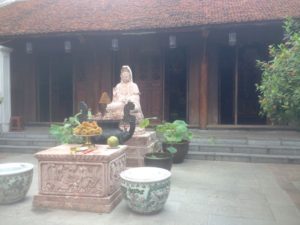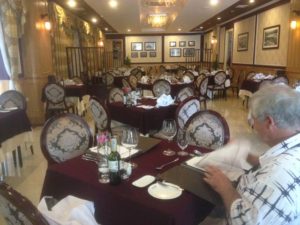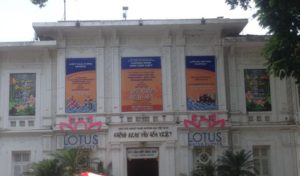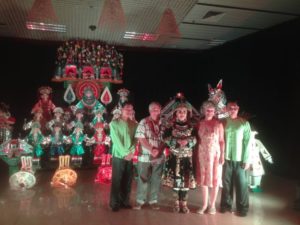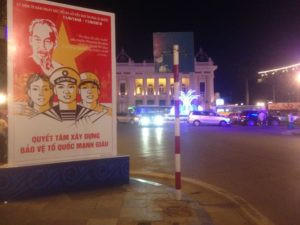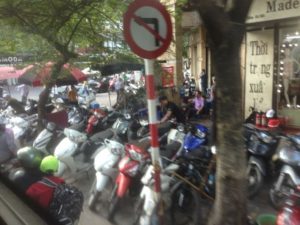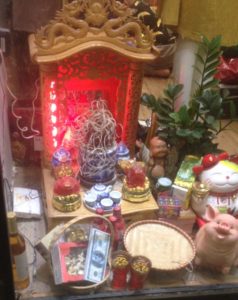In the morning we flew to Hanoi. From the plane we could see the Red River Delta, which was huge but much smaller than the Mekong Delta. Hanoi was founded in 1010 (after the Vietnamese were independent from China). We then took a bus to Halong Bay (3 hrs). Along the way, we learned more about Vietnam. In the north they harvest 2 rice crops a year, as opposed to 3 crops in the south. Today, 50% of the population are farmers, whereas in the 90’s, 80% were. The farmers are given 3,000 sq ft of land to farm. From that they can harvest 600 lbs of rice, but they have to pay the government a tax of 200 lb of rice. They can grow whatever they want (vegetable, fruits) but they still have to pay their tax in rice, which means they have to buy it from other farmers. If they lose a crop, they still owe the tax. before 1986, they had a collective farm system, but the production was very low. When they switched to the current system, productivity jumped. Today, they produce more rice than Thailand, and export o Europe and Africa. They are also the #1 producer of peppers, cashews, and coffee.
Hanoi is the most expensive city in Vietnam. Saigon is 90% less expensive. People lease the land from the government, but it is very expensive, so they build tall, skinny houses right to the property line. They generally don’t put window on the sides of the houses because another house will be built adjacent to theirs. 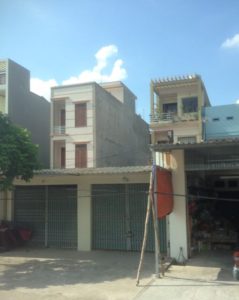
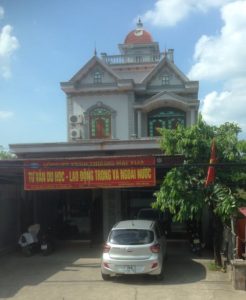 Generally, the bottom floor is used as a living room and/or place of business with a bathroom and kitchen and bedroom for the older generation in the back. Other bedrooms are on upper floors.We saw some very fancy houses that had been built by party officers.
Generally, the bottom floor is used as a living room and/or place of business with a bathroom and kitchen and bedroom for the older generation in the back. Other bedrooms are on upper floors.We saw some very fancy houses that had been built by party officers.
We saw a number of clustered graves in the midst of rice paddies, and learned that 95% of Vietnamese bury their dead. In the past, people could bury their dead anywhere so that it would be easy to visit their dead, but now the government is requiring that they use central graveyards. The custom is to bury the dead in a wooden box deep enough to find water, which helps the corpse decompose. After three years the coffin is dug up at night (sunlight is not supposed to touch the bones), and the bones are cleaned with rice wine, wrapped in white cotton and placed in a smaller box, which is buried in a square enclosure with a headstone.
Halong means descending dragon because the humped mountains look like a dragon in the water. The islands (3,000 of them) were formed 500 million years ago by sediments from the delta that collapsed in some parts and not in others. Halong Bay is a UNESCO World Heritage site and was recently named one of the “New Seven Natural Wonders of the World.” Seventeen million people visit each year, and the government is capitalizing on that fact by developing a huge Disney World-like resort with thousands of hotel units, rollercoasters, water parks, ferris wheels, etc. The scope of the development was beyond belief and was the biggest surprise of the trip.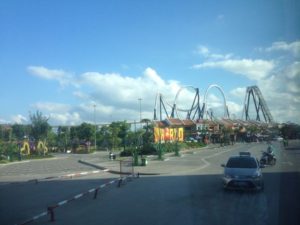
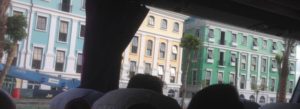
It seems a shame that this natural wonder is being so over-developed. There goes the neighborhood.
The next morning we took a traditional wooden boat out into the harbor, which was quite crowded.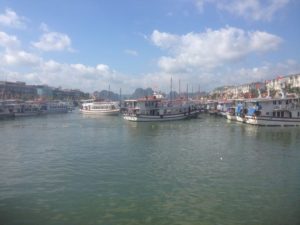 In fact, we were hit by other boats twice as we were backing out of the slip. Once we cleared the harbor, the islands were spectacular.
In fact, we were hit by other boats twice as we were backing out of the slip. Once we cleared the harbor, the islands were spectacular.
Approaching the islands was spectacular.
After an hour of sailing through spectacular rock formations, we docked at the Surprise Caves, so named because each cavern is larger and more surprising than the last. The view from the cave entrance (200 steps up). The caves were the largest I’ve ever seen.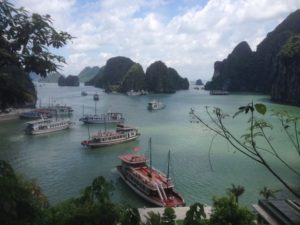
Before we boarded the boat again, we saw women selling fresh seafood from boats below the pier.
We were served a delicious seafood lunch onboard. On our sail back to the harbor, we saw lots of small fishing boats.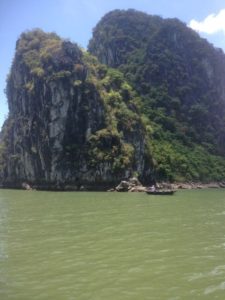
That afternoon we drove to Hanoi, where we checked in to our hotel in the French Quarter. There are 4 million people and two million scooters in Hanoi, and as Tao pointed out, there are no traffic laws, only suggestions.




